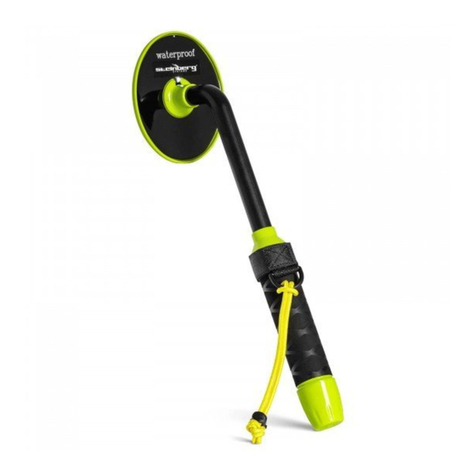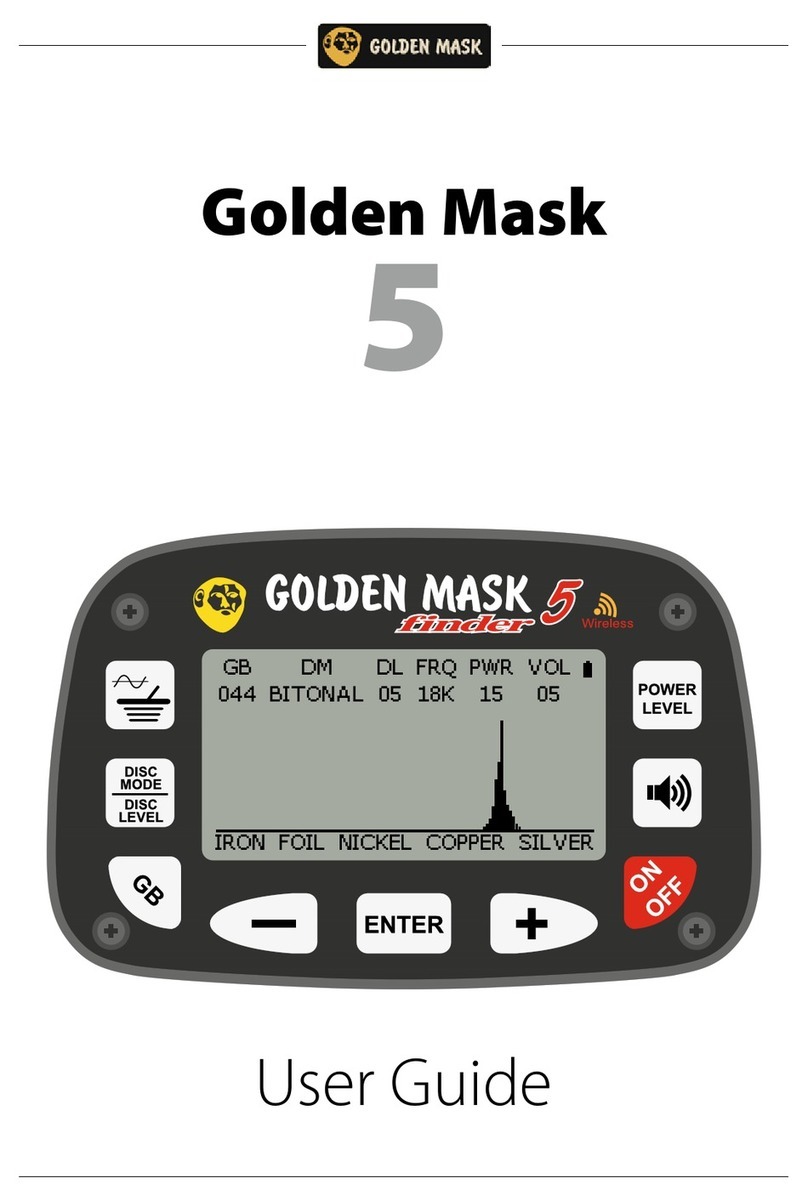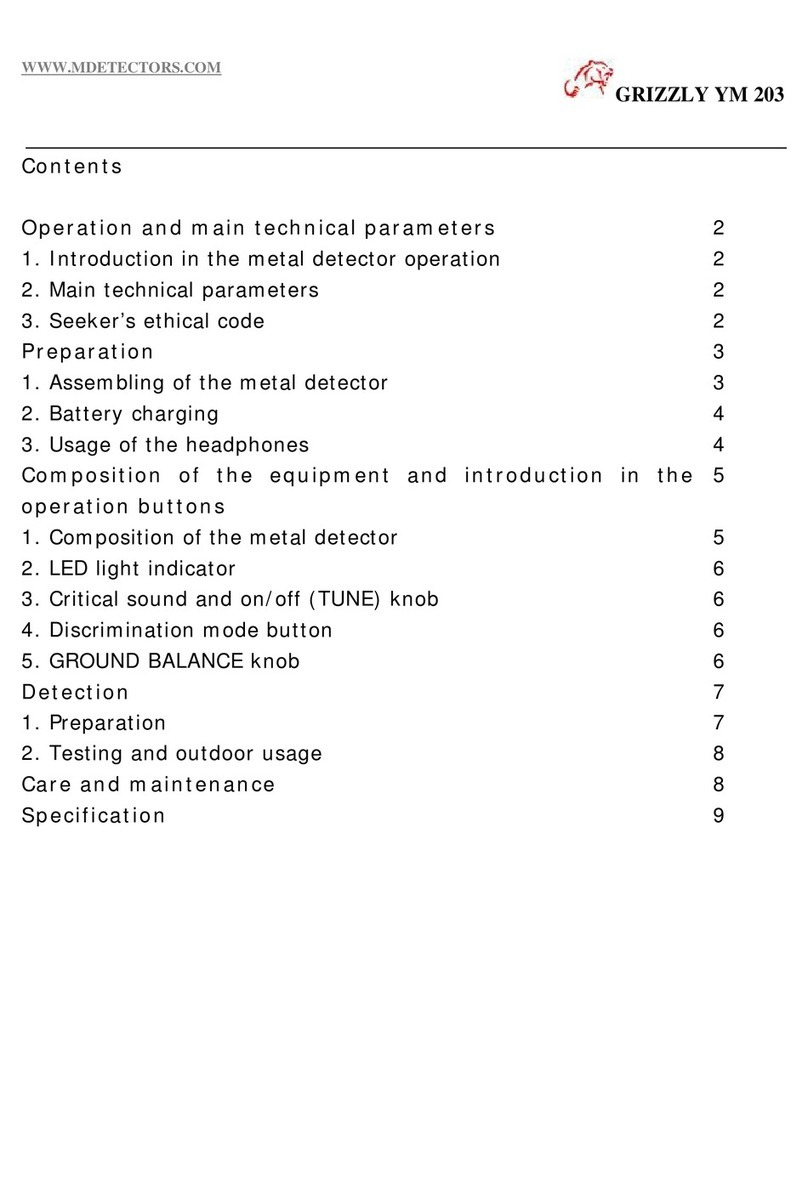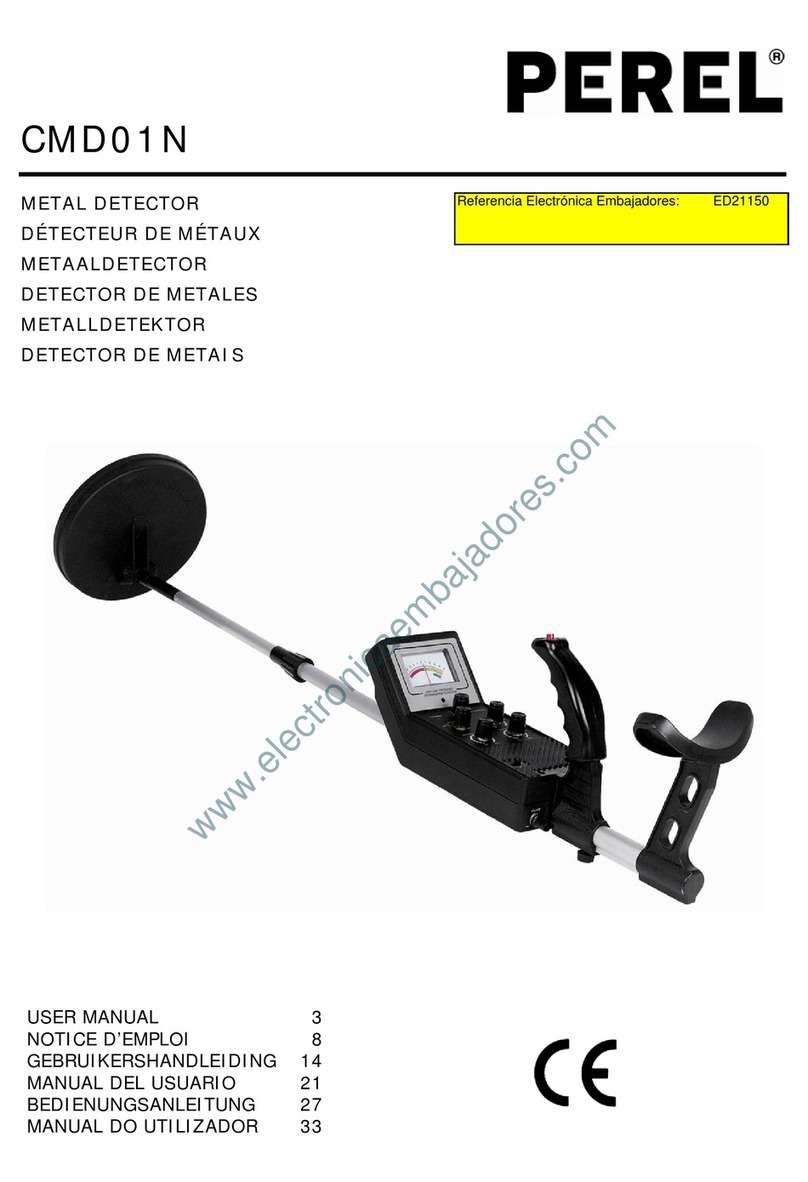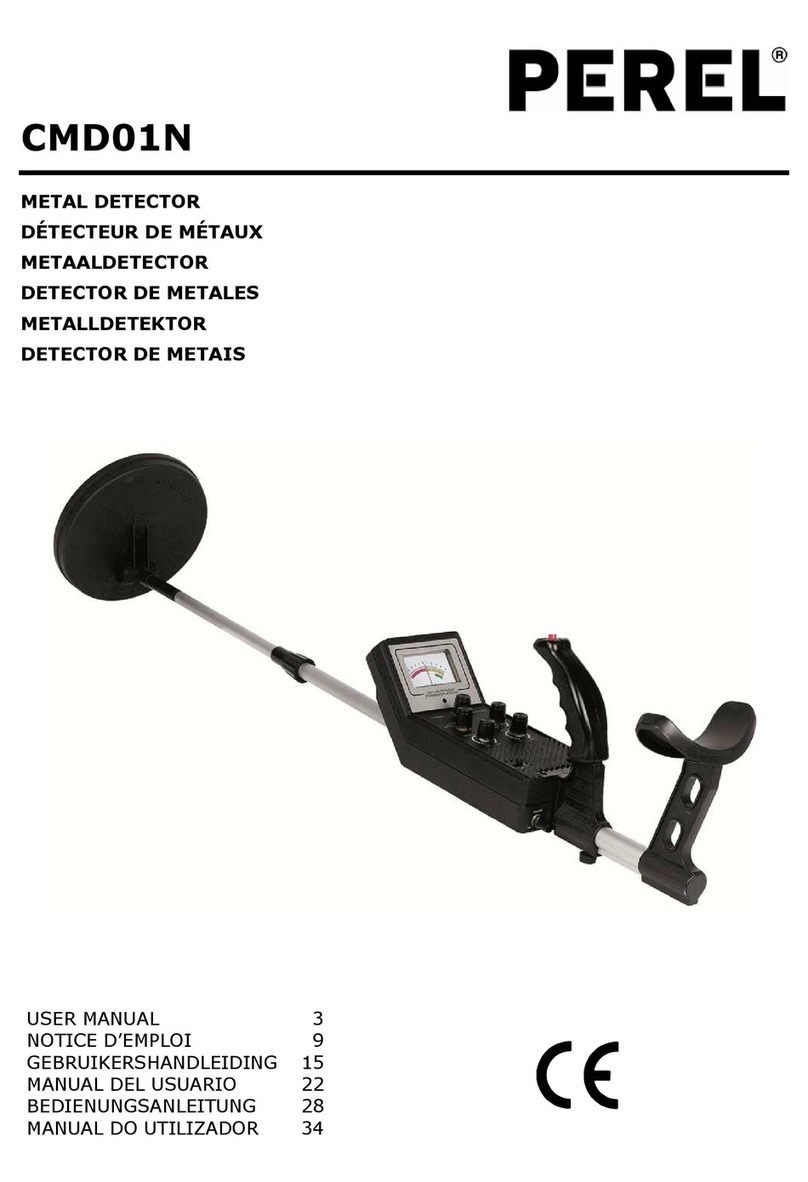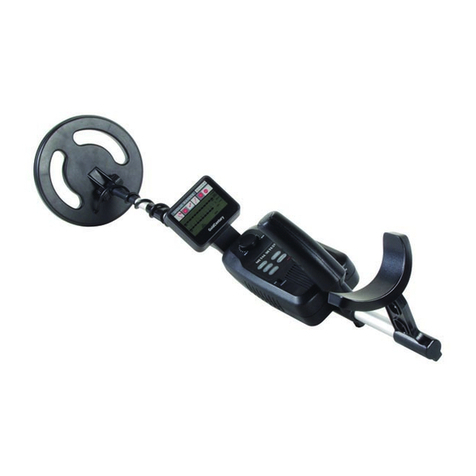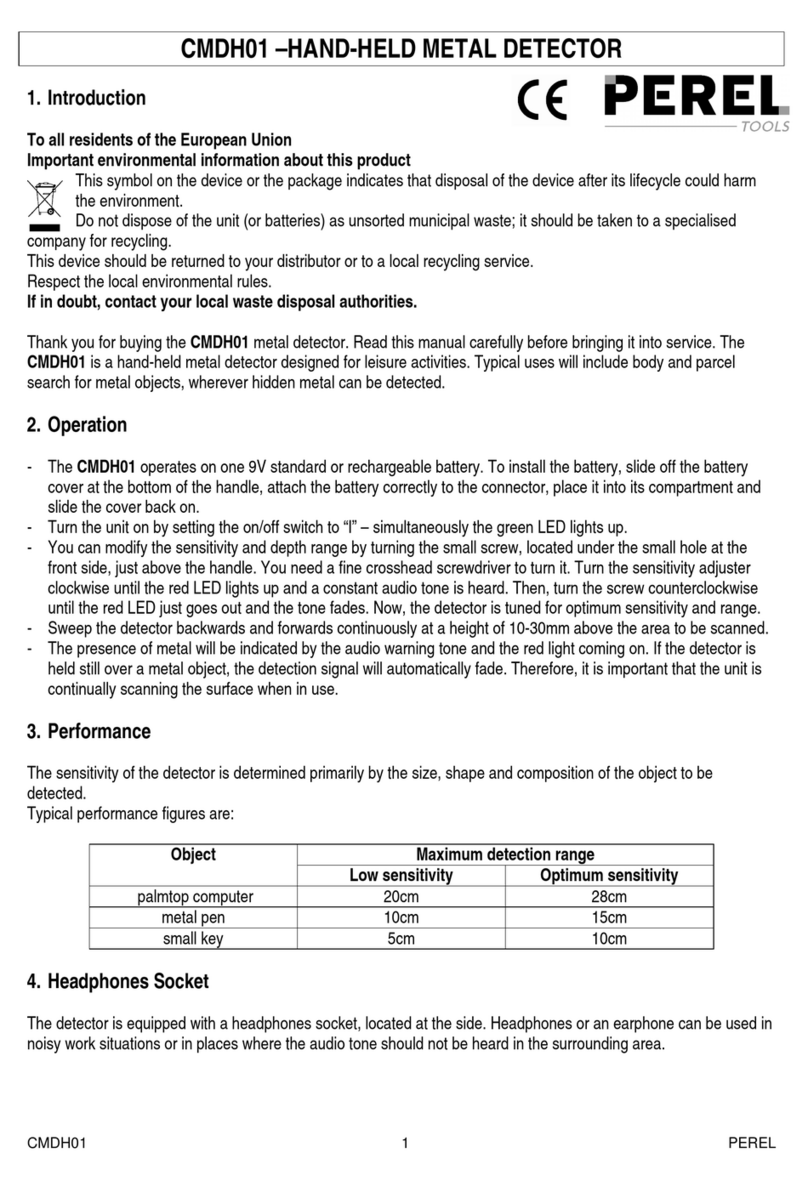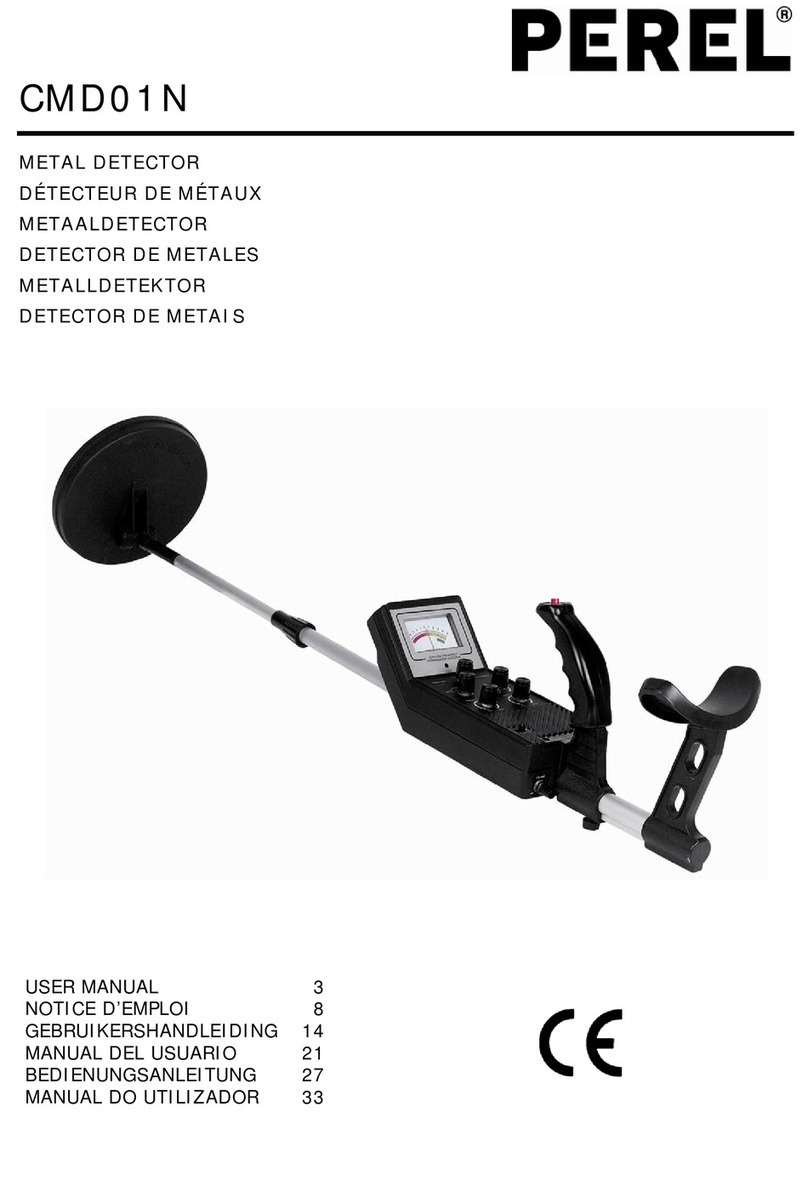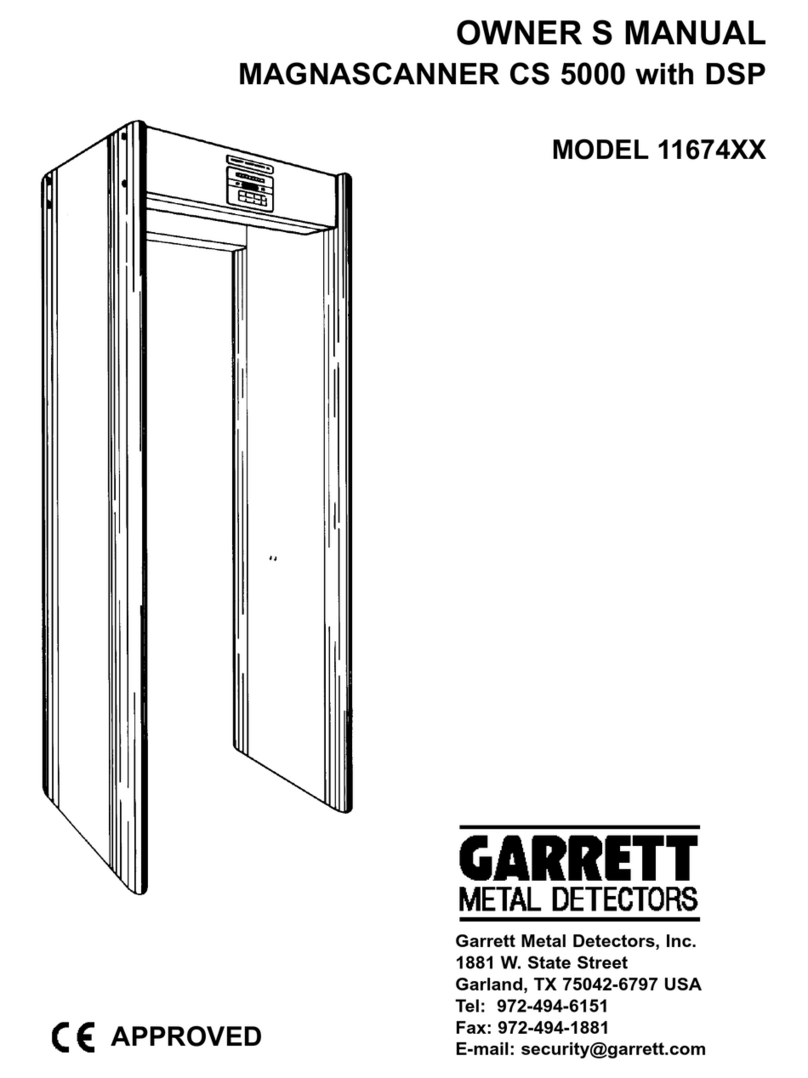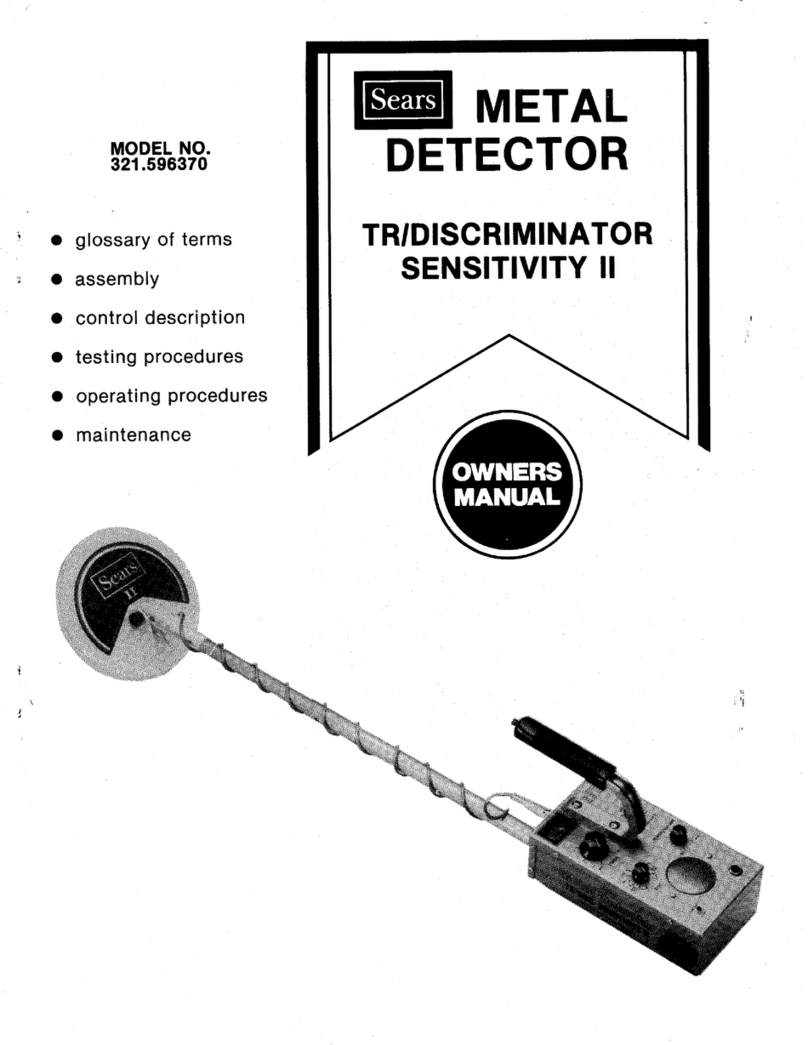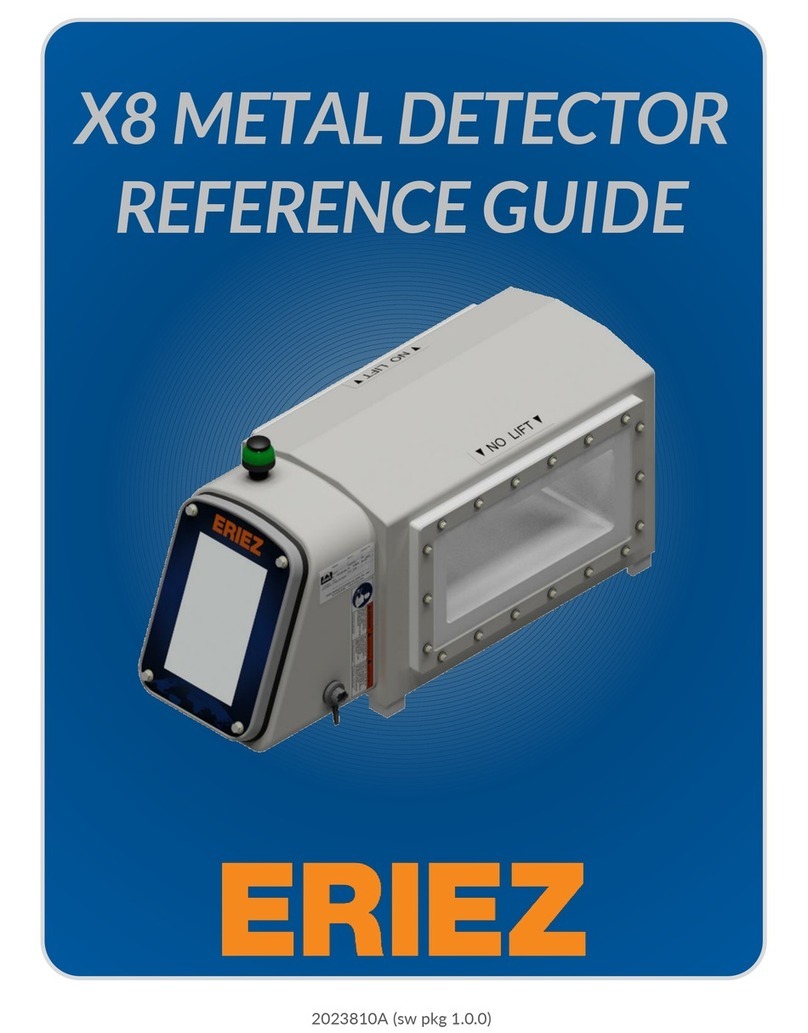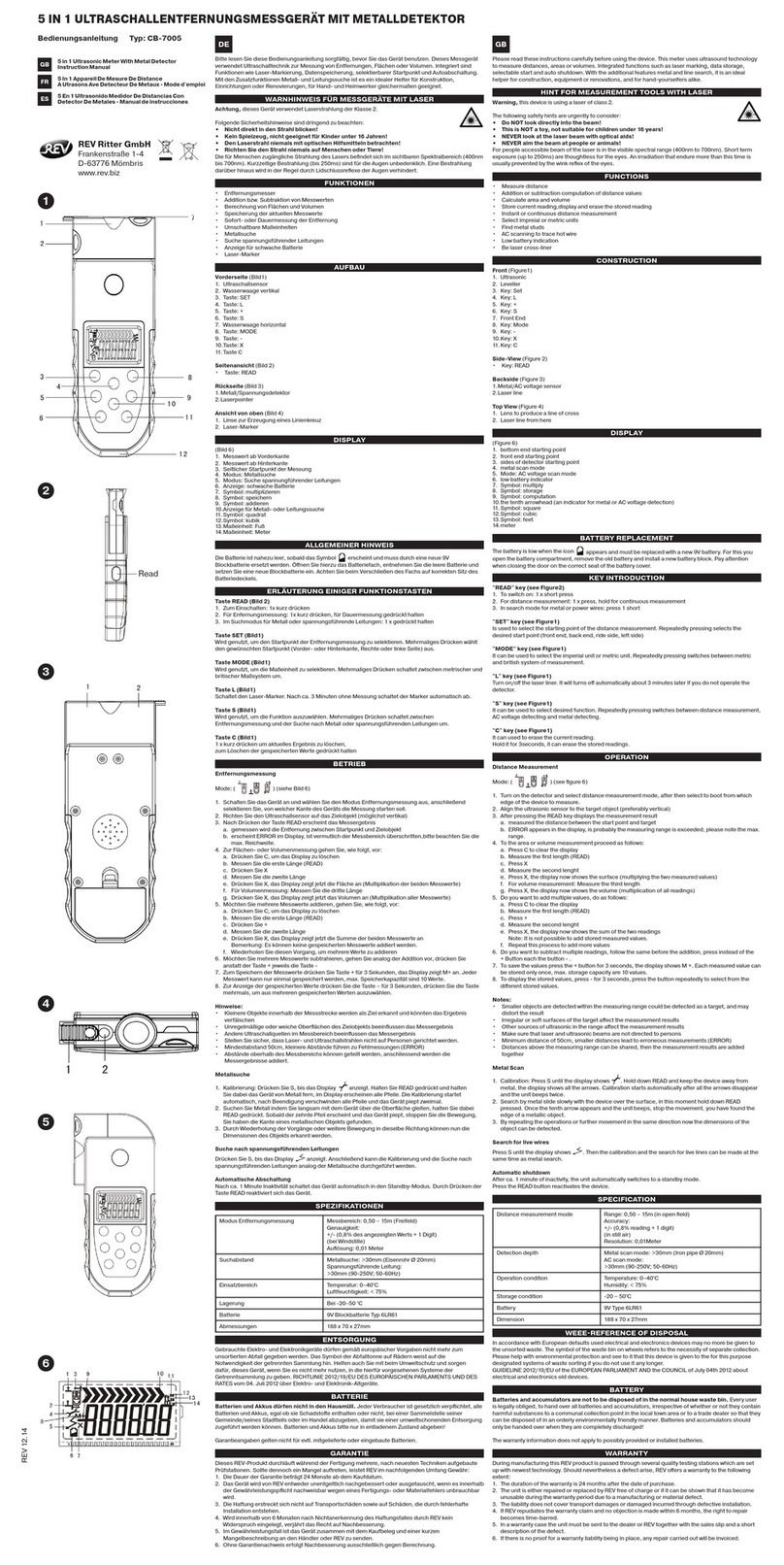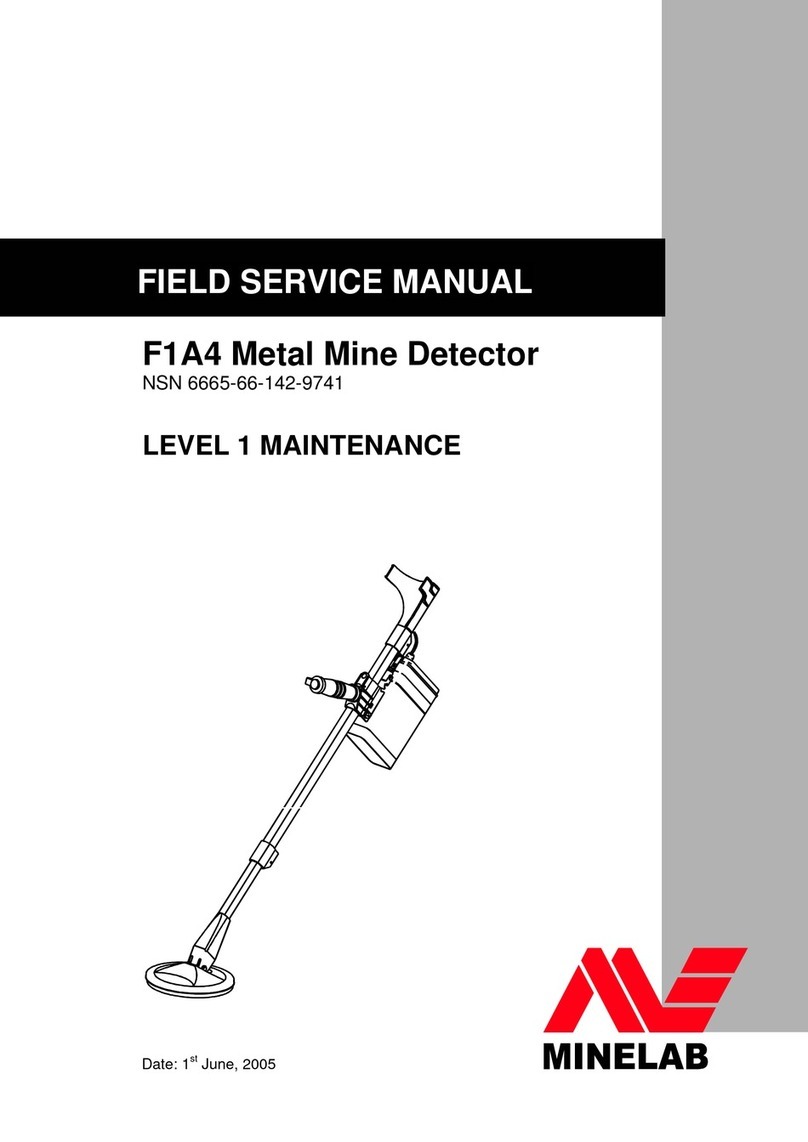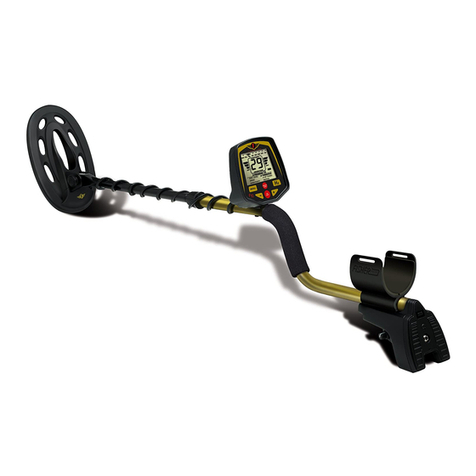
CMD01_v2 PEREL
Set MODE to VLF (very low frequency). To test the batteries in the left battery compartment, set BATT TEST to B1.
To test the batteries in the right battery compartment, set BATT TEST to B2.If the pointer on the VU-meter is
between 3 and 5 (green area), the batteries are OK. If the pointer is not in the green area, replace them.
d. Adjusting the Meter
Set MODE to OFF, use a screwdriver to adjust the pointer to line up with 0 on the scale.
e. Using Earphones
Using stereo earphones (not supplied) allows you to listen privately. It also saves battery
power and eases identifying subtle sound changes for better results. To connect headphones
to the detector, insert the earphones' 1/8-inch plug into the HEAPHONE jack.
Note: The detector's internal speaker disconnects when you connect earphones.
f. Listening Safely
To protect your hearing, follow these guidelines when you use earphones.
•Set the volume to the lowest setting before you begin. Adjust the volume to a comfortable level while listening.
•Do not listen at very high volume levels. Extended high-volume listening can lead to permanent loss of hearing.
•Once you set the volume, do not increase it. Over time, your ears adapt to the volume level, so a volume level
that does not cause discomfort might still damage your hearing.
g. Traffic Safety
Do not wear earphones while operating your detector near high-traffic areas. Even though some earphones are
designed to let you hear outside noise when listening at normal volume levels, they still can present a traffic hazard.
3. Operation
Your Velleman metal detector distinguishes between ferrous (contain iron) and non-ferrous
(do not) metals.
When the detector senses a metallic object, the meter reading changes, the NON-
FERROUS or FERROUS indicator turns on or off, and the detector sounds one of three
tones. The higher the tone pitch, the stronger the detection.
a. Preparing the Detector
1. Set BATT TEST to OPERATE.
2. Hold the detector in a comfortable position, then rotate MODE to the desired position.
Set it to VLF to test battery power and adjust TUNE and GROUND. (See "Tuning the Detector" and "Adjusting
GROUND"). Set it to TR1 to detect extreme differences in metals, such as between in metals, such as between
iron and gold. The difference between iron and gold shows on the meter (iron in the ferrous section, gold in the
non-ferrous section). Set it to TR2 to detect finer distinctions between metals, for example between aluminium
and gold (see "Adjusting DISCRIMINATION").
Follow these steps to set TUNE:
1. Rotate VOLUME to the 10 o'clock position.
2. Set MODE to VLF.
3. Set DISCRIMINATION, GROUND and SENSITIVITY to their midpoint.
4. Hold the search coil about 1 foot (30cm) away from the ground and any
metal object. While pressing the red button on the handle, slowly position
TUNE until the pointer on the vu-meter rests at 0. Release the red button.
As you search, you can fine-tune the detector using the other controls (see "Fine-Tuning the Detector")
Note: Press the red button on the handle at any time during operation to automatically return the pointer to 0.
